Where's that gull going?
Many birding enthusiasts travel to coastal Texas to observe shorebirds; especially during the winter months. However, if you don’t want to travel that far, you can see many of these birds in our area during spring, summer, and fall! No, your eyes aren’t deceiving you if you’ve spotted pelicans, gulls, and sandpipers (among other species) foraging and swimming in and around our area’s ponds, streams, rivers, and reservoirs!
Two of the most conspicuous species found in our area are the American White Pelican and Ring-billed Gull. As their name implies, the pelicans are overall white-colored with black wing tips and margins. Despite being one of the largest North American birds, the pelicans are impressive flyers and these easily recognized birds are usually found in groups often referred to as “squadrons.” American White Pelicans cooperatively hunt by swimming in a line and driving fish into shallow waters for more efficient capture! The pelicans locate fish by sight and by feel with their sensitive bills. Their distinctive, large throat pouches are used like scoops to capture their fish meals.
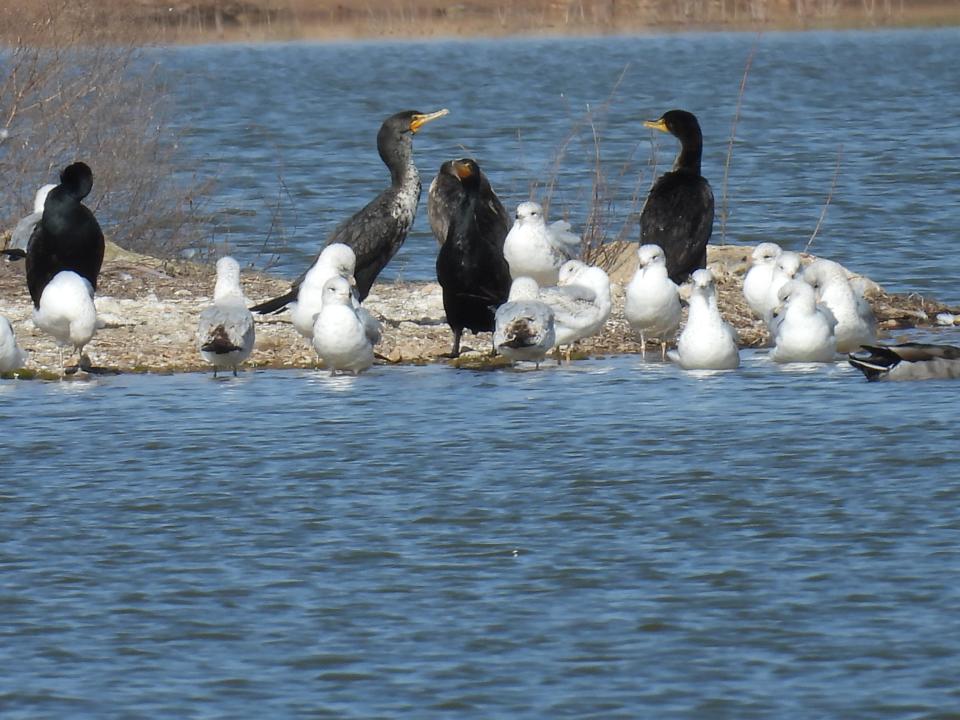
Ring-billed gulls are probably the most common type of seagulls in our area. Adult Ring-billed gulls are white with light gray backs and black tail margins and wing tips. Small white spots are present on the wingtips and their legs and bills are yellow-colored with a distinct black band near the tip of the bill. Although some gull colonies may remain in our area throughout the year, most are transient and fly to nesting areas in the northern United States and Canada.
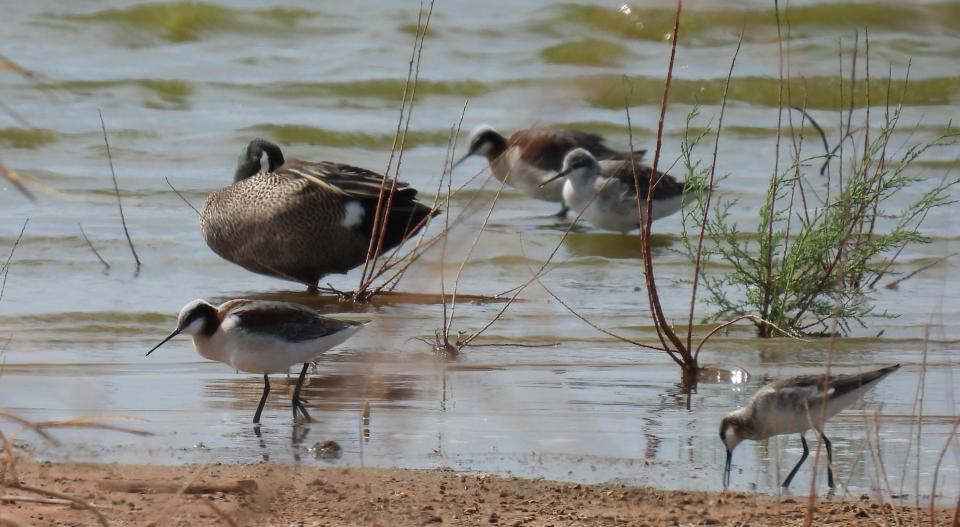
These gulls have adapted very well to human activities and, besides occurring on our lakes, may be sighted searching for scraps of food in restaurant parking lots, around landfills, and in other areas. Ring-billed gulls are opportunistic and omnivorous; feeding upon a wide variety of food items such as fish, insects, grubs, earthworms, and refuse. You may even occasionally observe a gull roosting on top of a White Pelican’s head hoping to swipe a fish meal from the larger bird!
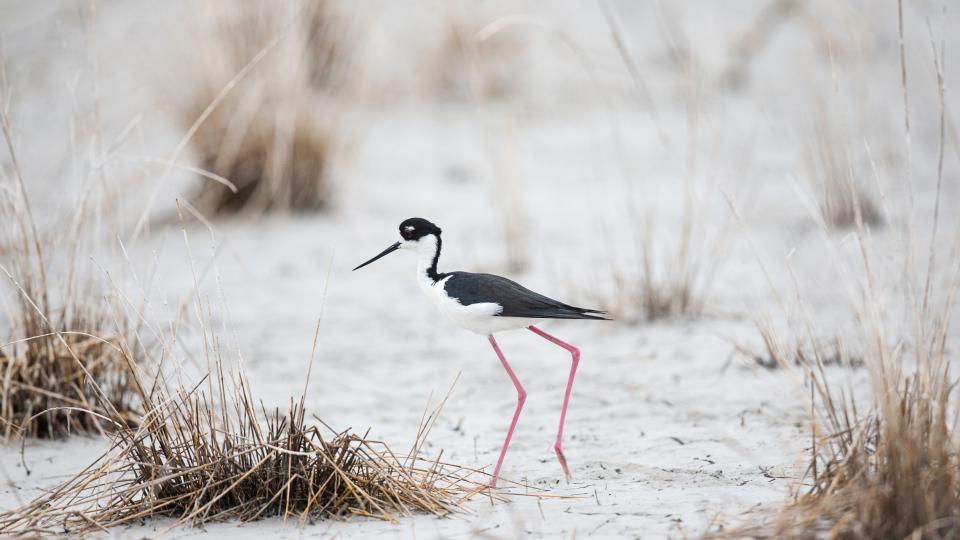
Two more distinctive, visiting shorebirds are the Black-necked Stilt and Wilson's Phalarope. Black-necked Stilts are thin, tall, and appear delicate. Stilts have very long, slender, pinkish-colored legs, black-colored bills, and long, black wings. Their bellies and tails are white and a white spot is present above their eyes. Black-necked stilts feed along shorelines, marshes, and mudflats. They visually locate food items and obtain them from surfaces with their slender bills. Foods include flies, beetles and other insects, crayfish, snails, and small fish.
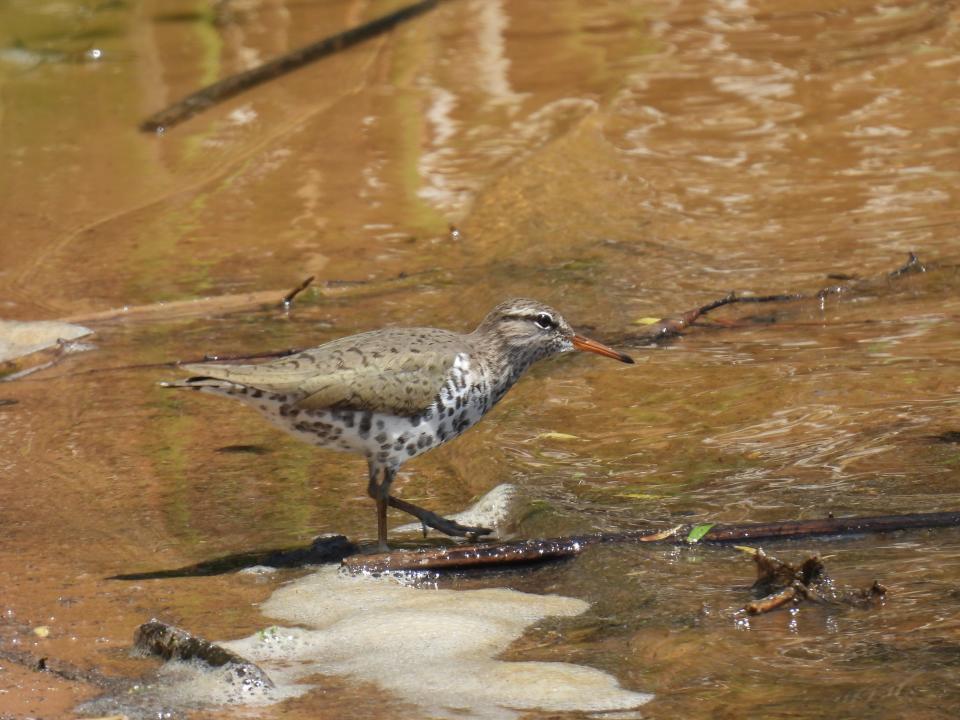
Black-necked Stilts utilize nesting areas along the east, west, and southern coasts of the United States; but also (perhaps oddly) nest in some interior areas in New Mexico, California, Colorado, Idaho, and Texas. Nesting areas are usually on bare ground near water. If a potential predator approaches the nest, parents may fly up and away and participate in a distraction display in an attempt to lure the threat away from their nest.
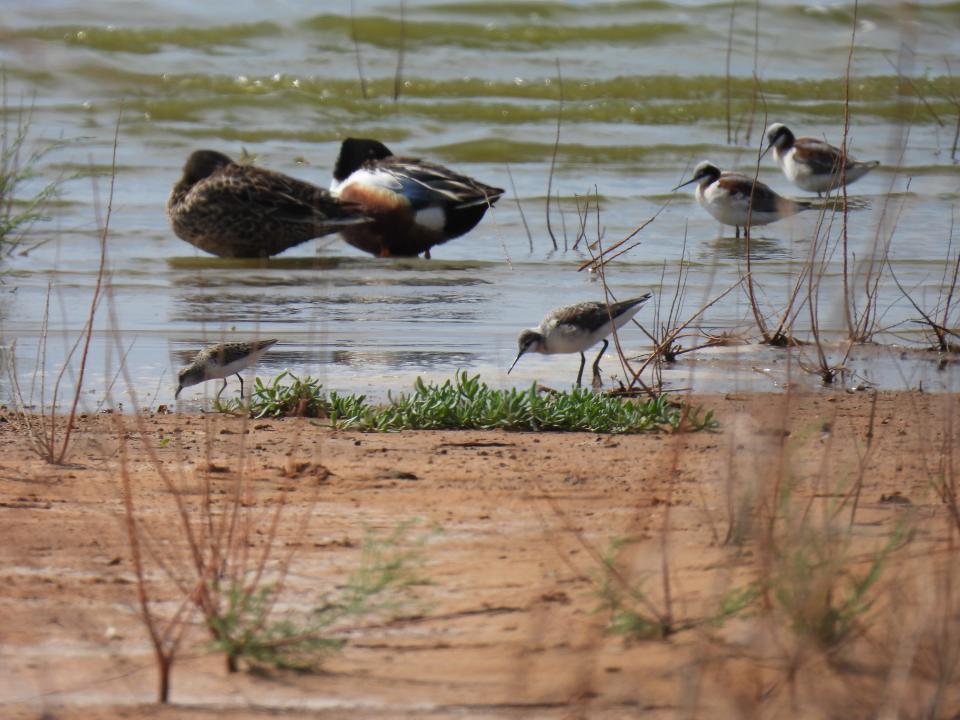
Wilson’s Phalarope is an exception to the rule that (in most species of birds) males are the most brightly-colored and distinctive of the genders! Instead, adult females have dark, black bills and dark stripes extending from the base of their bills over the sides of the neck onto their backs. Throats are a buffy, brownish color during breeding season and bellies are white. Males have a similar color pattern; but only in white and dull gray colors! These phalaropes may be seen frequenting the margins of our lakes, marshes, and mudflats where they forage while swimming or walking along shorelines. Food items include aquatic insects and crustaceans. Wilson’s Phalarope nests from the southern Yukon to Minnesota and southward from California and Nevada to Kansas. In yet another role reversal, females take the lead in courtship displays but abandon their nests after laying eggs; leaving their male partners to incubate the eggs and raise the young! Females may mate with more than one male and leave each partner with a set of eggs to brood and fledge!
Another group of visiting shorebirds includes several species of sandpipers found in our area primarily during spring and fall months. Most sandpipers are small in size and challenging to identify in the field. Minute differences in colors and patterns and differences in foraging behaviors distinguish between species. Also, differences in the size, shape, and curvature of bills and colors of their legs help in identification. However, even experienced birders find many of these characteristics difficult to observe. Adding to the challenge is the habit of sandpipers to congregate together in mixed flocks! Therefore, a common term (usually acceptable to birders) referring to this entire group is simply calling them “Peeps”!
Three species of Peeps visiting our area are the Least, Semipalmated, and Western Sandpipers. Semipalmated Sandpipers are described as small and plain with short, straight bills appearing blunt at their tip. Semipalmated Sandpipers have black legs; whereas, the Least Sandpiper has greenish-yellow legs. Also, Semipalmated Sandpipers closely resemble Western Sandpipers; but the Western Sandpiper molts earlier in the fall and will appear a uniform gray color before Semipalmated Sandpipers complete their fall molt. Upon reflection, perhaps it is best to stick to the term ‘Peep’!
However, one easily identified sandpiper is the Spotted Sandpiper. True to its name, the Spotted Sandpiper is the only species with numerous, round, black spots on its neck and belly when in breeding plumage. Its feet and legs are fleshy-colored and its bill is orange to gray colored, thin, and straight with a dark tip. Spotted Sandpipers are found along the edges of ponds, lakes, and streams and forage for insects, crustaceans, mollusks, and tiny fish. Spotted Sandpipers also have a distinctive up-and-down (bobbing) motion of their rear ends when searching for food. Unlike many other species of sandpipers that prefer to nest in far northern latitudes, the Spotted Sandpiper also includes much of interior North America as part of its nesting grounds.

Remember that you don’t always have to go to the seashore to get a sight of seagulls and other shore and surf birds! However, many of these species are only passing through our area on their way to nesting grounds farther north; so try and make it a point to go exploring for seagulls and other coastal species at your earliest opportunity!
Jim Goetze is a retired professor of biology and former chairperson of the Natural Sciences Department of Laredo College with an avid interest in all aspects of the natural world. He can be contacted at gonorthtxnature@gmail.com
This article originally appeared on Wichita Falls Times Record News: Seagulls, other shore birds often seen far from the ocean

